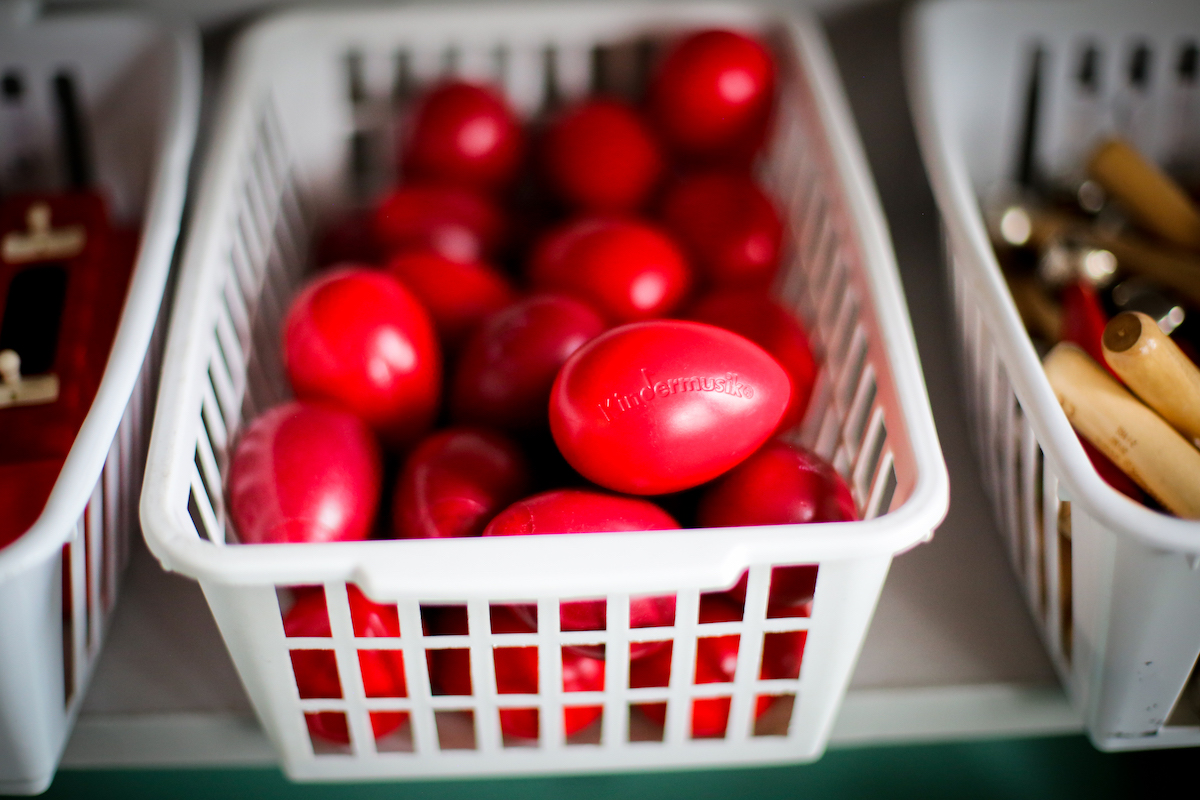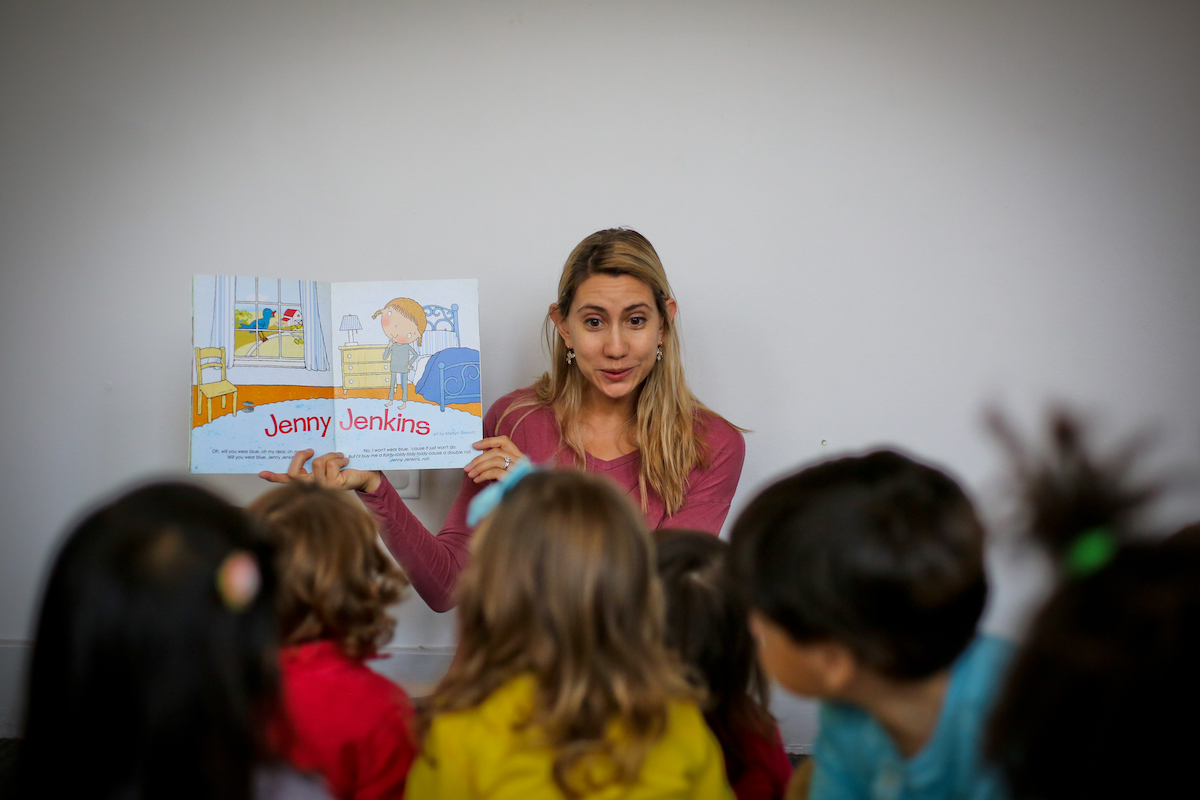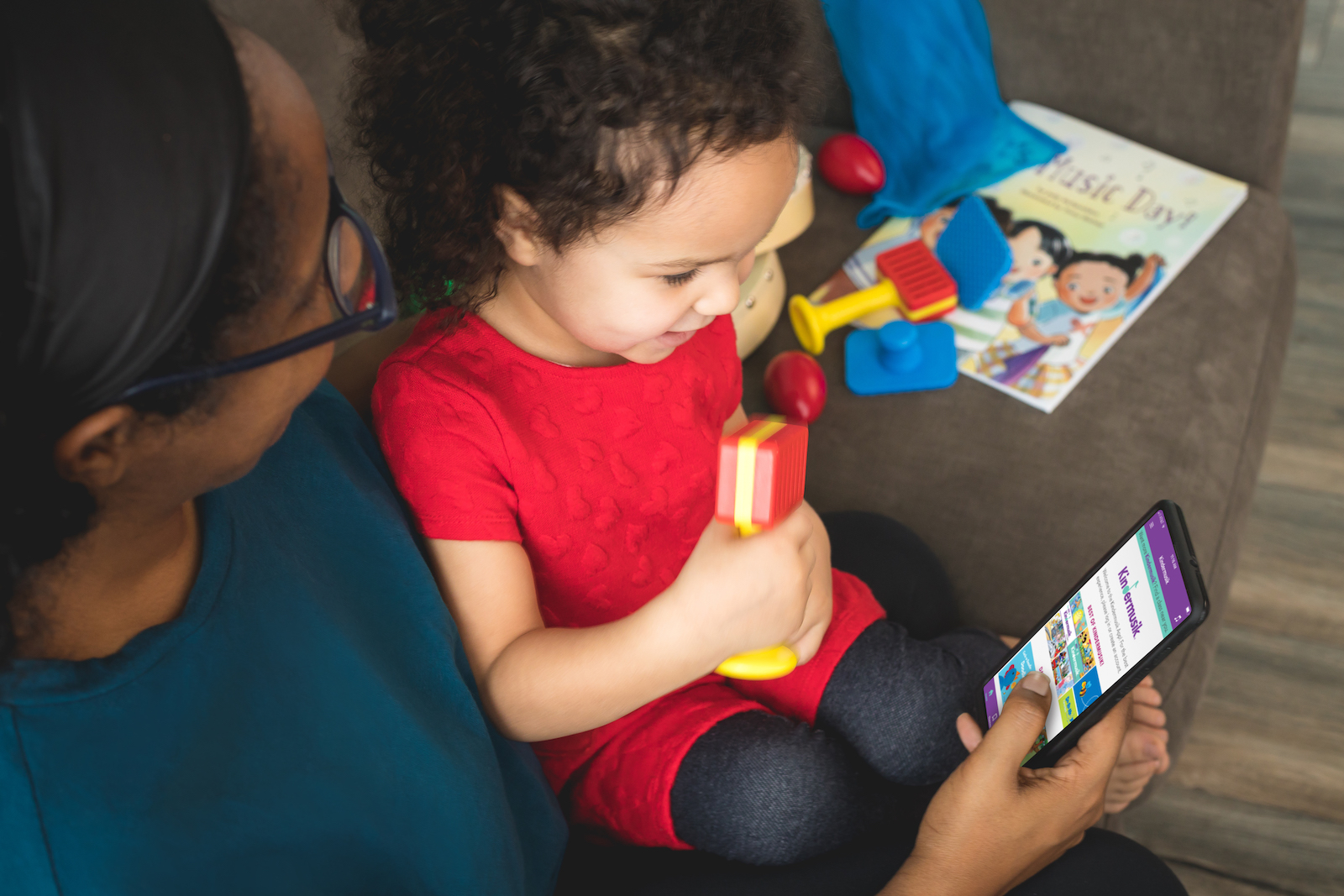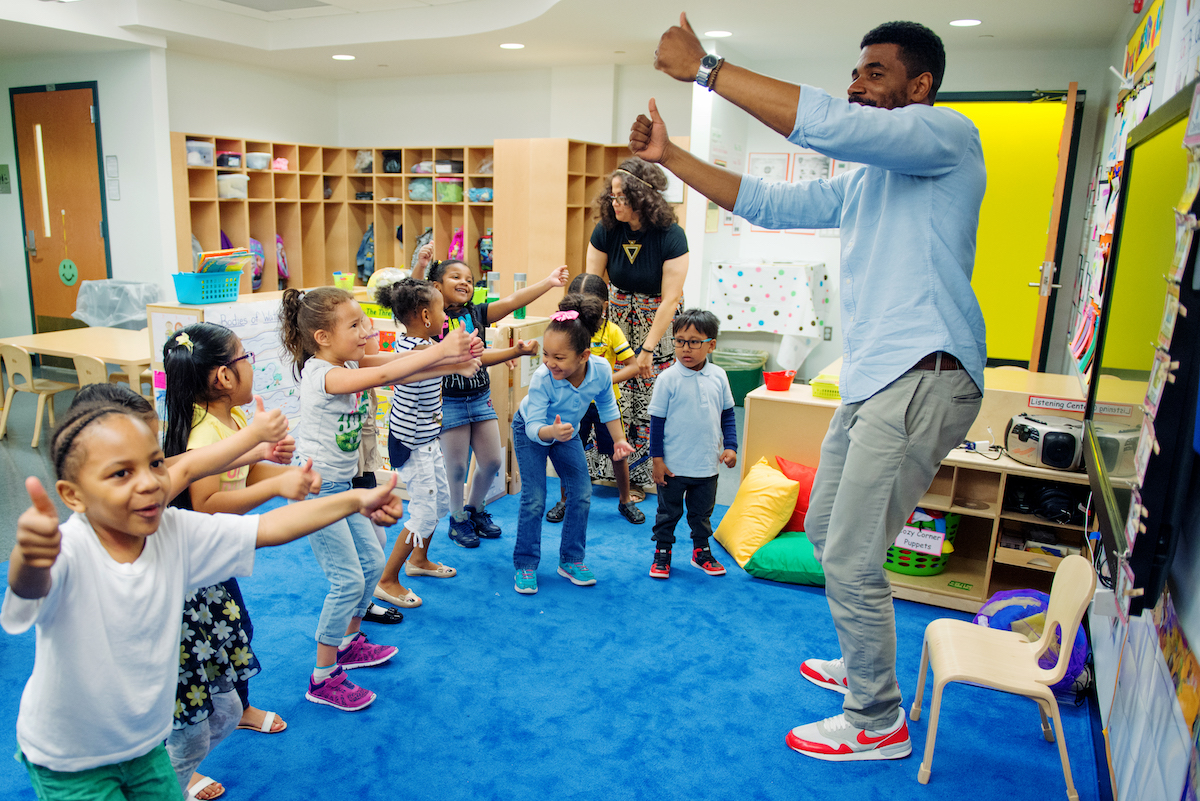Something amazing happens in Head Start programs when music comes out to play. Children (and teachers!) smile and laugh, work together, and safely express thoughts and feelings through movement and music. And that’s just the beginning…
Shared musical play is so much more than “music appreciation.” It actually primes the brain for learning, setting children up for success in school, relationships, and beyond.
6 Ways Music Boosts Learning in Early Head Start or Head Start Programs
1. Movement helps release chemicals that support memory and learning.
Young children move to learn. In fact, they need to use their entire bodies often in order to digest content, self-regulate, and succeed in transitions. Valerie Strauss explained it this way in The Washington Post article, “Why so many kids can’t sit still in school today: “In order for children to learn, they need to be able to pay attention. In order to pay attention, we need to let them move.”
In our Head Start curriculum, we clap hello at the beginning of class, fly like a bird, stand and stretch our arms high like a tree, or even dance around the room.
So, what’s happening?
They’re strengthening and refining gross motor skills. Plus, all of this movement supports memory and learning, promotes vestibular system development, and engages the body and mind.
2. Music teaches children sequencing.
Being able to break down a task into steps from first to last helps young children comprehend a story, complete a math problem, and even get dressed to go to school each morning.

Plus, breaking down a task—like getting ready for recess—into steps (clean up area, push in chair, put on jacket, stand in line, etc.) gives young children practice in self-management, which reduces frustration. From toddlers to older preschoolers, sequencing practice lives in engaging lyrics and activities that are easy to remember, and easy to put into practice later.
3. Music education introduces relationships between sounds and symbols.
Do you remember taking spelling tests as a child? Listening, identifying the word, and then writing it down? That activity helped you become a better reader.
Kindermusik kits don’t come with tests, but we do give children’s ears lots of practice in listening to rhythms, identifying what they hear, and repeating it. We call this process rhythmic dictation. So, while we clap, chant, or play an instrument along with the music, students gain practice in recognizing relationships between sounds and symbols, which goes hand-in-hand with early literacy skills.
4. Music helps children develop self-regulation skills.
Self-regulation is the ability to control our thoughts, feelings, and actions. Our Early Head Start and Head Start Program teachers use musical play to help children learn to tell their bodies what to do—when to stop, when to go, and when to move to another activity.
When we play a stop-and-go game, participate in a circle dance, or even share instruments, children learn and practice those inhibitory skills. Achieving self-regulation milestones is directly linked to better behavior, safety, attention span, and so much more.
5. Music builds early literacy and language skills.
Research indicates that our brains process music and language in similar ways because they share fundamental connections. To understand a spoken sentence, our auditory system has to process the individual phonemes. And that’s combined with the intonation communicated by pitch. So, singing alone is an important precursor to strong language skills.

Additionally, combining music and read-aloud supports comprehension, phonological awareness, vocabulary acquisition, and print development. That’s why Kindermusik units alway incorporate stories and books. In fact, an independent study showed children who received just 30 minutes per week of Kindermusik demonstrated 32% greater gains in literacy and language skills.
6. Music is a universal language and a natural family bonding resource.
Family engagement in early childhood education matters. Every Early Head Start and Head Start program administrator understands that it can be the difference between a child thriving or not. A parent or primary caregiver is a child’s first and best teacher, especially in those critical first six years.

It’s one of the reasons every Kindermusik Head Start kit includes accessible digital resources and optional physical materials for families to use together at home, where a child learns best. These materials include the music and books (via our free app), as well as practical tips on incorporating the music and movement activities to strengthen daily routines and rituals.
Check out our full Head Start program capabilities or contact schools@kindermusik.com for more information.
Originally authored by Lisa Camino Rowell, a freelance writer living in Atlanta, Georgia.

